by James Hajik
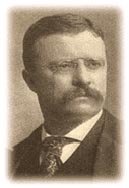
Theodore Roosevelt
One of the most colorful Presidents of the United States was Teddy Roosevelt. Theodore "Teddy" Roosevelt was born on October 27, 1858, in New York City. His parents were Theodore Roosevelt Sr. and Martha Bulloch. "Teedie," as his close friends and family called him, was the second child of four. As he grew up he developed a love of natural history and reading, as well as hunting, boxing, and wrestling. He was educated in expensive private elementary and high schools.
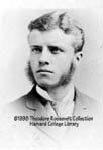
Teddy at his College Graduation
Roosevelt went to Harvard from 1876 to 1880, where his hard work led him to the Columbia University Law School. During his Harvard years, he met Alice Lee, whom he married after his graduation. They settled in New York, where he wrote a book entitled The Naval War of 1812. Eventually, he came to the world of politics, and in 1881, was elected as a Republican to the New York State Assembly. Here, he worked with members of both parties, but did not run again in 1884 because of family problems.
On February 14, 1884, his wife had died while giving birth to a daughter who survived. Also, on that same day, his mother passed away. Roosevelt left New York and moved out west to Montana where he started the Elkhorn Ranch. Here, for two years, he ran his ranch and continued to write. In 1886, however, he returned to the New York City, entered politics, and took third in the race for Mayor of New York City. He met and married Edith Carow the same year. They moved to Long Island, where they had five children.
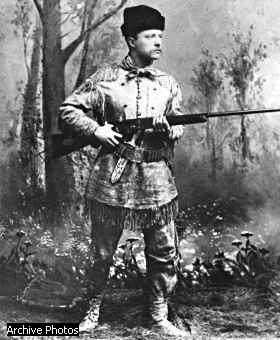
Roosevelt as a Rancher
In 1889, Roosevelt became the New York Civil Service Commissioner after speaking in favor of hiring government workers based on skills, not party preference. Here, Roosevelt gained public interest after exposing weaknesses in the patronage system. Then, in 1894, he returned to New York City as the President of the Police Board. He fought against such things as police corruption, which gave him experience and a better view to the public.
When McKinley was elected President, he made Roosevelt the Assistant Secretary of the Navy, where he prepared the Navy for the oncoming struggle with Spain in the Spanish-American War. After the incident in which the USS Battleship Maine exploded in Havana Harbor in Cuba, as Assistant Secretary Roosevelt instructed Commodore Dewey to attack the Spanish Fleet in the Philippines. In May, 1898, Roosevelt resigned his Navy position to personally volunteer to fight in Cuba. He formed the Rough Riders, a volunteer group of Montana cowboys to serve in Cuba. The Rough Riders performed well, and Roosevelt became a national hero.
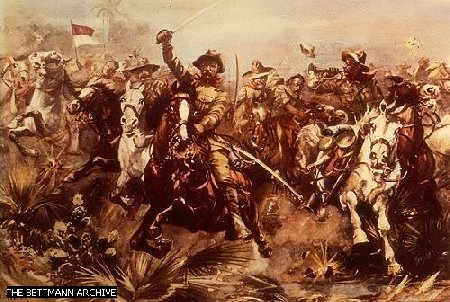
An romantic artist’s rendition of Teddy Roosevelt at the Charge on San Juan Hill.
(Actually the Rough Riders fought on foot alongside a troop of American Black troops)
Soon after returning home, he ran for Governor of New York and won. Although many people disliked his attitudes about certain political aspects, the Republican Party liked him, and he was nominated to run as Vice President under William McKinley. After the election, on September 6, 1901, McKinley was assassinated, making Roosevelt the youngest President in American history at the age of 42.
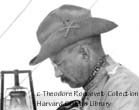
Roosevelt as a Rough Rider
As President, he led his visitors on running, climbing, and swimming adventures, which many Americans viewed as an expression of their spirit. He kept McKinley’s cabinet, but controversy when he threatened Army intervention during a violent 5-month long coal miner’s strike. The miners eventually received a 10% pay increase and they only had to work nine hour days.
Roosevelt is mostly remembered, though, for his trust-busting. He established laws that made trusts (monopolies) illegal. This brought the common man to believe that he was their ally. He said that both rich and poor should have equal rights. During one speech, he stated, "We must treat each man on his worth and merits as a man. We must see that each is given a square deal, because he is entitled to no more and should receive no less." His Presidential platform became known as "The Square Deal" because of this.
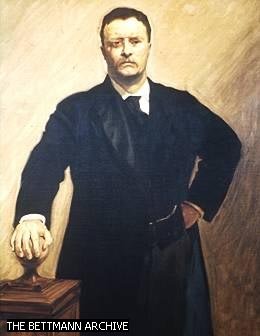
Roosevelt as President of the United States
Roosevelt was a strong supporter of economic imperialism. His idea on foreign affairs, which is still used today, was "Speak softly and carry a big stick." He made many treaties that would help American business in foreign trade. Under Roosevelt, the military was significantly strengthened. He exercised his military might by threatening to send troops to Venezuela to protect it if any country sent in armed forces to collect money owed them. Many countries agreed with him, and ruled that it is improper to use force for collection of debts. This was added to the Monroe Doctrine as "the Roosevelt Corollary."
It was around this time that Roosevelt became interested in conservation of American resources. The Reclamation Act of 1902 established irrigation projects for the West. He added millions of acres of land to the control of the newly formed US Forest Service. Many members of Congress disagreed with the way he spent money, but he stood his ground.
Roosevelt realized that a canal in Panama would boost world trade. The canal building began in 1903, and was finished in 1906. In 1904, Roosevelt and the "Square Deal" won a second Presidency, in which many of his new ideas would pass into laws. The Pure Food and Drug Act prohibited manufacturing of unsafe food and drugs. The Hepburn Act of 1906 gave railroad companies and eventually telephone companies a maximum top on their charge rates.
In 1906, Roosevelt won the Nobel Peace Prize for his work in ending the Russo-Japanese War. He brought the Russians and Japanese together and negotiated a treaty with them. This is known as the Treaty of Portsmouth. He continued to strengthen the military, which was used on many occasions to stop wars.
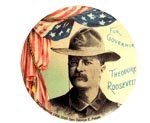
A "Vote for Teddy" Pin
In 1908, Roosevelt decided not to run. William Taft, also a Republican, was nominated to run until 1912. But after the election, Roosevelt began to dislike Taft, and in the Election of 1812 formed his own political party called the Bull Moose Party. It was during this Presidential race that an assassination attempt was made on Roosevelt. But, even after being shot, he continued his speech, simply saying, "I will deliver this speech or die."
Woodrow Wilson, the Democratic candidate running against the two Republicans, to be fair stopped campaigning until Roosevelt recovered from his wound, but because Roosevelt and Taft had split the Republican Party, Wilson won the election.
The wound and a later visit to an Argentinean jungle led to Roosevelt’s eventual demise. He was hospitalized in 1818, had lost hearing in one ear, and his youngest son died overseas. All this proved to much for him, and Theodore Roosevelt died in his sleep at home in 1919. He had been the first president to ride in a car, fly in an airplane, and travel abroad while in office. Although he was President so long ago, his actions still make an impact on America today.
"Theodore Roosevelt" @ http://www.theodoreroosevelt.org/, 5/31/00
Encarta Encyclopedia 99 (CD-ROM) Microsoft Corporation, 1999
Student Handbook. Vol. 2. USA:Southwestern Company, 1982.
American Odyssey. Columbus, Ohio: MacMillan/ McGraw Hill, 1992.
Picture #1 - "Theodore Roosevelt" from: http://www.theodoreroosevelt.org/
Picture #2 - "Teddy at his Graduation" from: http://www.theodoreroosevelt.org/
Picture #3 - "Roosevelt as a Rancher" from: Encarta Encyclopedia 99
Picture #4 - "An Artists Rendition of Teddy Roosevelt Charge at San Juan Hill" from: Encarta Encyclopedia 99
Picture #5 - "Roosevelt as a Rough Rider" from: http://theodoreroosevelt.org/
Picture #6 - "Roosevelt as President of the United States" from: Encarta Encyclopedia 99
Picture #7 - "A ‘Vote for Teddy’ Pin" from: http.//www.theodoreroosevelt.org/